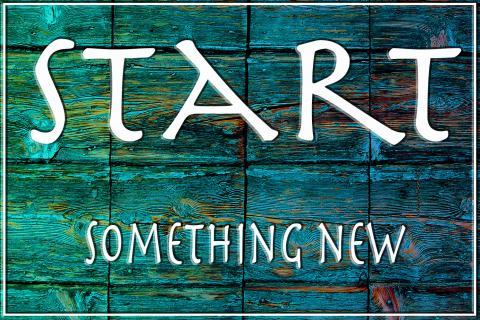Clean Language Questions
by Marian Way in Clean Language Questions

Clean Language consists of about 20 questions, asked in a particular way. When David Grove watched therapists at work and analysed transcripts of their client sessions, he realised they were subtly changing their clients’ words and he felt that this robbed them of their experience. So he experimented with keeping his clients’ words intact, repeating them verbatim. He also began to pare down the questions themselves so that they would contain fewer presuppositions.
For example, “What are you thinking?” presupposes that a person is thinking something, and limits their possible responses, so David ‘cleaned’ the question to become: “Are you thinking anything?” Later, he dropped the word ‘thinking’ and used an even cleaner question: “Is there anything else about … ?”
David also took extreme care to ensure that the question he was about to ask would be effective in directing their attention to a particular aspect of a person’s experience. He realised that questions like, “Can you tell me how you feel about that?” would shift their attention back and forth (you – me – you – that), so he removed all pronouns, unless they were part of what the client was talking about. So “Tell me more” also became, “Is there anything else about … ?”
As well as omitting some words, David made a point of adding two specific words:
- That The word ‘that’ allows for more specific ‘pointing’ at particular aspects of an inner landscape… e.g. If a client says, “I would like to feel more relaxed,” then asking, “What kind of relaxed is that relaxed?” directs their attention to the word relaxed and invites them to consider it in more detail.
- And David started each question with the word ‘and’. This was to acknowledge the client’s words and join the facilitator’s words in with them, so that the client stays in their own experience.
Even if a person is recalling a memory or talking about what might happen in the future, the experience of recalling or envisioning is happening right now. So another feature of Clean Language is that all the questions are framed in the present tense, and this enables the client to start self-modelling ‘live’ in the room, and increases the chances that a change can also happen live in the room.
In ‘cleaning up’ the questions, most verbs were dropped and most of the questions include only one of two verbs: ‘to be’ and ‘to happen’.
The questions containing the verb ‘to be’ help to keep time still and are mostly used for developing individual perceptions:
- Is there anything else about that … ?
- What kind of … is that … ?
- Where is … ?
- Whereabouts … ?
- That’s … like what?
- How many … are there?
- Is there are relationship between … and … ?
- Is … the same or different to … ?
- Is … on the inside or the outside?
Questions containing the verb ‘to happen’ generally encourage the client to move time forwards or backwards:
- Then what happens?
- What happens next?
- What happens just before … ?
- What would you like to have happen?
- What needs to happen for … to happen?
- When … what happens to … ?
Questions which utilise other verbs are:
- How do you know … ?
- Does … have a size or a shape?
- What determines … ?
- Where does / could … come from?
- Can … ?
The Syntax
You may be wondering what has happened to the ‘and’ I mentioned before…
That comes in when you combine one of these questions with the client’s words. A clean question has three functions:
- To acknowledge what the client has said
- To direct their attention to one aspect of their experience
- To send them on a quest for self knowledge
So if I client says, “I would like to be more healthy.”
We can use this 3-part syntax:
- And you would like to be more healthy... (acknowledge)
- And when more healthy ... (direct attention to more healthy)
- Is there anything else about that more? (send on quest for self knowledge)
When they first hear Clean Language questions being asked, lots of people worry about the fact that the questions do not sound grammatically correct. It’s true, they don’t. They can sound quite odd at first. But the funny thing is that if you are on the receiving end of the questions, they seem to make perfect sense.
"Clean Language is deeply agreeable to the client’s heart and soul."
David Grove
Related blog posts
Using Clean Language Principles in Coaching Sessions
23rd Jul 2009
Four Questions for One-Minute Motivation
26th Mar 2016
10 Ways to Get Started with Clean Language
1st Apr 2014
Related courses
- 1-Hour Clean Language Taster
- Clean Language: Core Skills
- Clean Coach Certification Programme (accredited ICF Level 1 programme)
- Basic Clean Interviewing Skills
About Marian Way
A highly skilled facilitator and trainer, Marian, who founded Clean Learning in 2001, has developed and delivered training across the world. She is the author of Clean Approaches for Coaches, co-author, with James Lawley, of Insights in Space and co-author, with Caitlin Walker, of So you want to be… #DramaFree.
Marian is an expert Clean facilitator, an adept modeller, a programme writer and an inspirational trainer. She has a natural ability to model existing structures, find the connections between them and design new ways for people to learn. Marian was a leading innovator within the Weight Watchers organisation, which included developing the “points” strategy, a local idea that went on to become a global innovation. She is a director of both Clean Learning and Training Attention CIC, world leaders in clean applications for corporate, educational and community development. She designs our programmes and workbooks, leads workshops and teaches on all our courses. She’s trained people in Great Britain, Russia, Sweden, Germany, Australia, Japan and the USA. Marian is also a recognised Clean Assessor.
- Blog categories
- A - Z of Clean
- Adventures in Clean
- Book Reviews
- Business
- Clean Ambassadors
- Clean Interviewing
- Clean is like ...
- Clean Language
- Clean Language Questions
- Clean Space
- Client Stories
- Coaching
- Creativity
- #DramaFree
- Education
- Health
- ICF
- Life Purpose
- Listening
- Metaphor
- Modelling
- Outcomes
- Practice Group
- Symbolic Modelling
- Systemic Modelling
- Training


